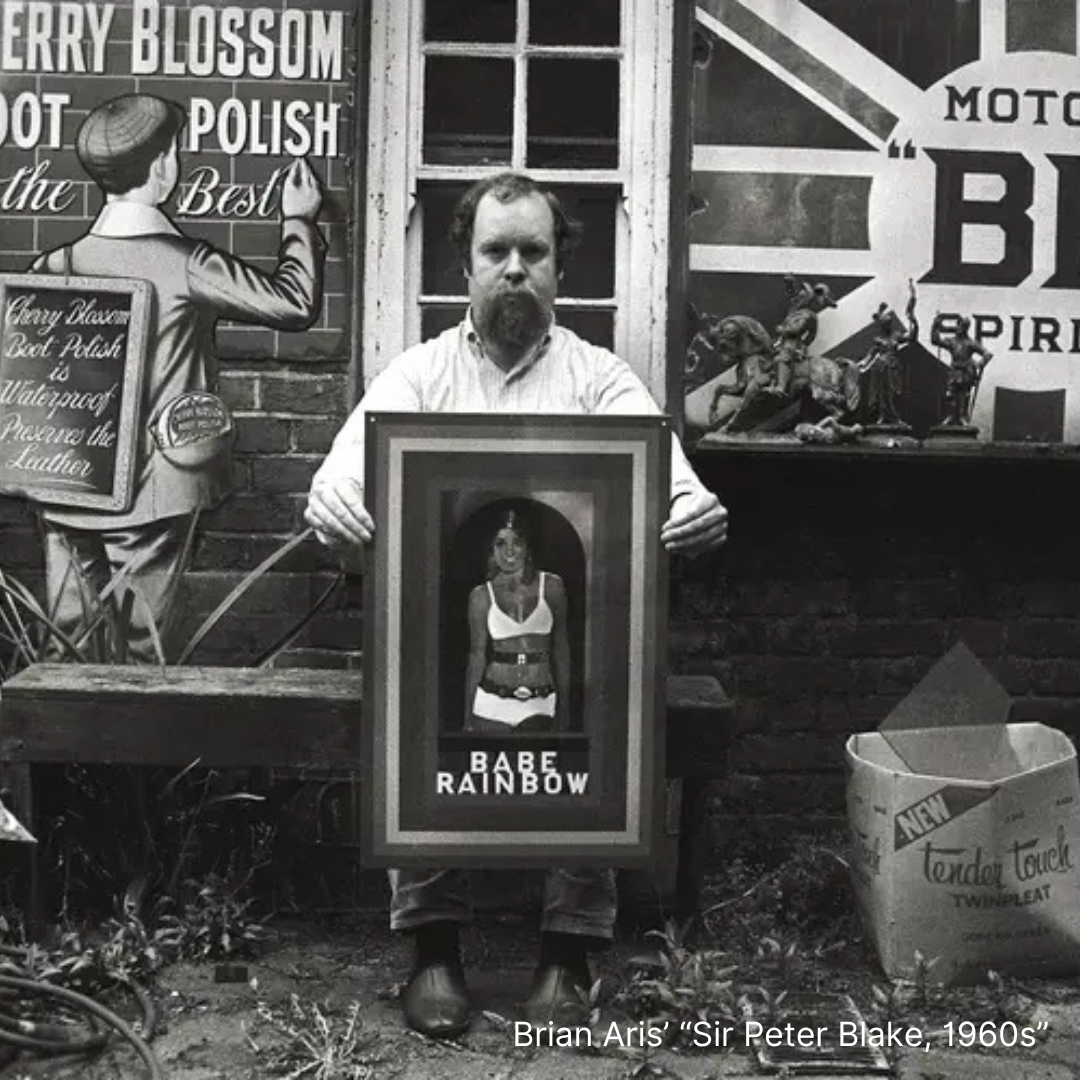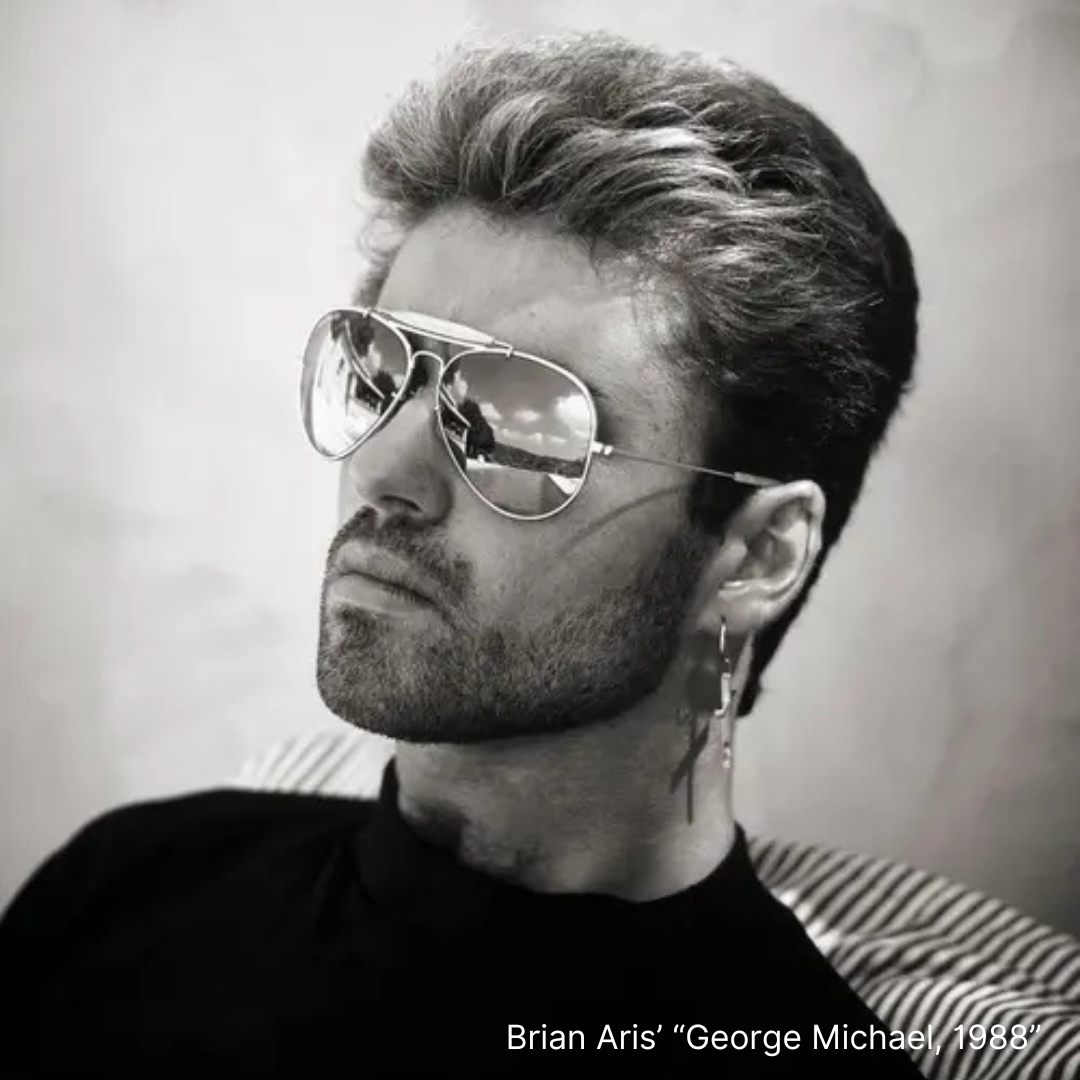Brian Aris’ Art Went From Frontlines to Fame, Vietnam to Mick Jagger,
and MoMA Exhibition
Marcos Mena Cruz on October 19, 2024

Peggy's Pushing Boundaries auction brings to collectors the iconic works of Brian Aris, a name synonymous with celebrity photography and cultural documentation. Aris began his remarkable career as a photojournalist for a London agency, with early years marked by frontline assignments that took him around the world, documenting pivotal moments in history from the civil unrest in Northern Ireland to the war in Vietnam. In a dramatic shift, Aris transitioned from war zones to glamor, opening a studio in London where he photographed fashion models and rising stars in the music industry. This new chapter saw him working with top models in exotic locations and documenting the exploding British music scene of the 1970s and 80s, capturing everyone from punk rockers to pop sensations.
Aris' versatility and talent led to high-profile commissions, including exclusive coverage of Band Aid and Live Aid, as well as numerous celebrity weddings. His work caught the attention of the British Royal Family, resulting in official portraits of Queen Elizabeth II and other royals. Today, Aris' photographs are exhibited in prestigious galleries worldwide, including The National Portrait Gallery in London, with his vast archive standing as one of the largest individual collections in the UK. His portrait of The Who is also part of the MoMA collection exhibited at "Making Music Modern: Design for Ear and Eye" in 2016. As Aris' work takes center stage at the upcoming Pushing Boundaries auction, it's an opportune time to reflect on his profound impact on our visual culture and his role in shaping the very notion of celebrity.
Two pieces featured in the auction stand out: "Mick Jagger behind set in the USA" and "George Michael". These images are more than mere portraits; they're windows into the very process of icon-making.
The 1982 piece "Mick Jagger behind set in the USA" offers a behind-the-scenes glimpse that reinforces, rather than subverts, the legendary status of the rock icon. Even in this backstage moment, Jagger appears calm, cool, and composed, demonstrating that his charisma extends beyond the stage. The photograph derives its power from what it doesn't show—the screaming fans, the explosive performances—instead focusing on the enduring allure of Jagger's persona. By capturing him in this seemingly casual yet still magnetic state, Aris solidifies the myth of Mick Jagger. It suggests that even when he's not performing, Jagger remains someone to admire, a star whose magnetism is intrinsic rather than merely a product of his stage presence. This image contributes to the complex tapestry of Jagger's public image, showing that the line between the performer and the person is beautifully blurred, fascinating audiences for decades.
Equally compelling is the photograph of George Michael, taken in 1988, which captures the pop icon at the height of his solo career. In this powerful black and white portrait, Michael exudes confidence and style. He's shown in profile, his gaze fixed somewhere beyond the frame, wearing aviator sunglasses that reflect light, adding a touch of mystery. His beard is neatly trimmed, and his hair is styled in the iconic voluminous look of the late 80s. Michael wears a simple black top, with a hint of a striped pattern visible on his shoulder, possibly from a jacket. An earring dangles from his visible ear, completing the image of a pop star at the cutting edge of fashion and music.
This image was captured at a crucial juncture in Michael's career. 1988 saw the release of his debut solo album "Faith," which had catapulted him from teen idol status as part of Wham! to a bona fide adult pop superstar. The album was a massive commercial and critical success, spawning hit singles like "Faith," "Father Figure," and "One More Try." It would go on to win Album of the Year at the 31st Grammy Awards in 1989.
Aris' photograph encapsulates this moment of transformation and triumph. The serious expression and stylish appearance speak to Michael's evolution as an artist, shedding his teen pop image for a more mature, sophisticated persona. Yet, there's a vulnerability in his expression, hinting at the complex individual behind the superstar facade. This image captures not just a pop icon, but an artist at the pinnacle of his commercial success, poised between public adoration and personal artistry.
By juxtaposing these images of Jagger and Michael, Aris demonstrates his ability to capture pivotal moments in the careers of music legends. Both photographs reveal the multifaceted nature of stardom, showing these icons as both larger-than-life figures and introspective artists. These portraits contribute to the visual narrative of pop culture history, freezing in time the moments when these musicians stood at the crossroads of immense fame and artistic evolution.
What makes these works so valuable is not just their subject matter, but the way Aris approaches the very concept of celebrity photography. He understood that his role was not simply to document, but to participate in the creation of cultural narratives. Each click of his shutter helped to shape the way we perceive and interact with celebrity culture.
Aris' work reminds us that icons are not born, but carefully crafted—through talent, yes, but also through the power of image. His photographs became an integral part of the star-making machinery, influencing how celebrities presented themselves and how the public perceived them. In this way, Aris wasn't just pushing boundaries; he was redrawing them, expanding our understanding of what celebrity could mean.
For collectors and enthusiasts, acquiring an Aris photograph is more than a transaction—it's an investment in a piece of cultural history. These images are not just beautiful or technically proficient; they are key fragments in the mosaic of our shared cultural experience. They represent moments where art, celebrity, and cultural transformation intersect, frozen in time by Aris' perceptive eye.
In a world where the boundaries between celebrity and artistry, public and private, icon and individual are constantly shifting, Brian Aris' work remains a touchstone. His photographs don't just capture celebrities: they capture moments of transformation, the birth of icons, and the subtle interplay between public image and private individuality. As these pieces find new homes, they carry with them not just the imprint of their famous subjects, but the enduring legacy of a photographer who helped shape the way we see and understand celebrity.
While Brian Aris has exhibited at MoMA, the auction is independent of MoMA and not a partnership with the museum.





